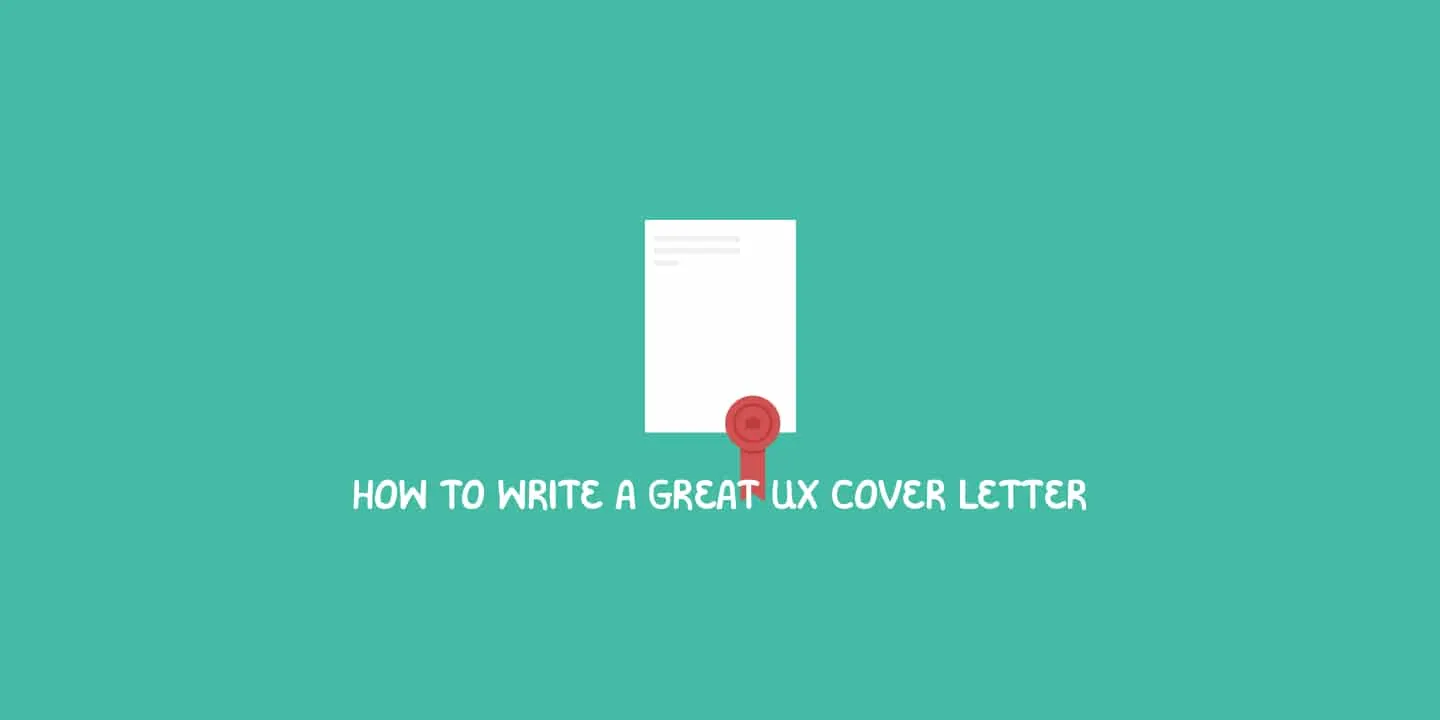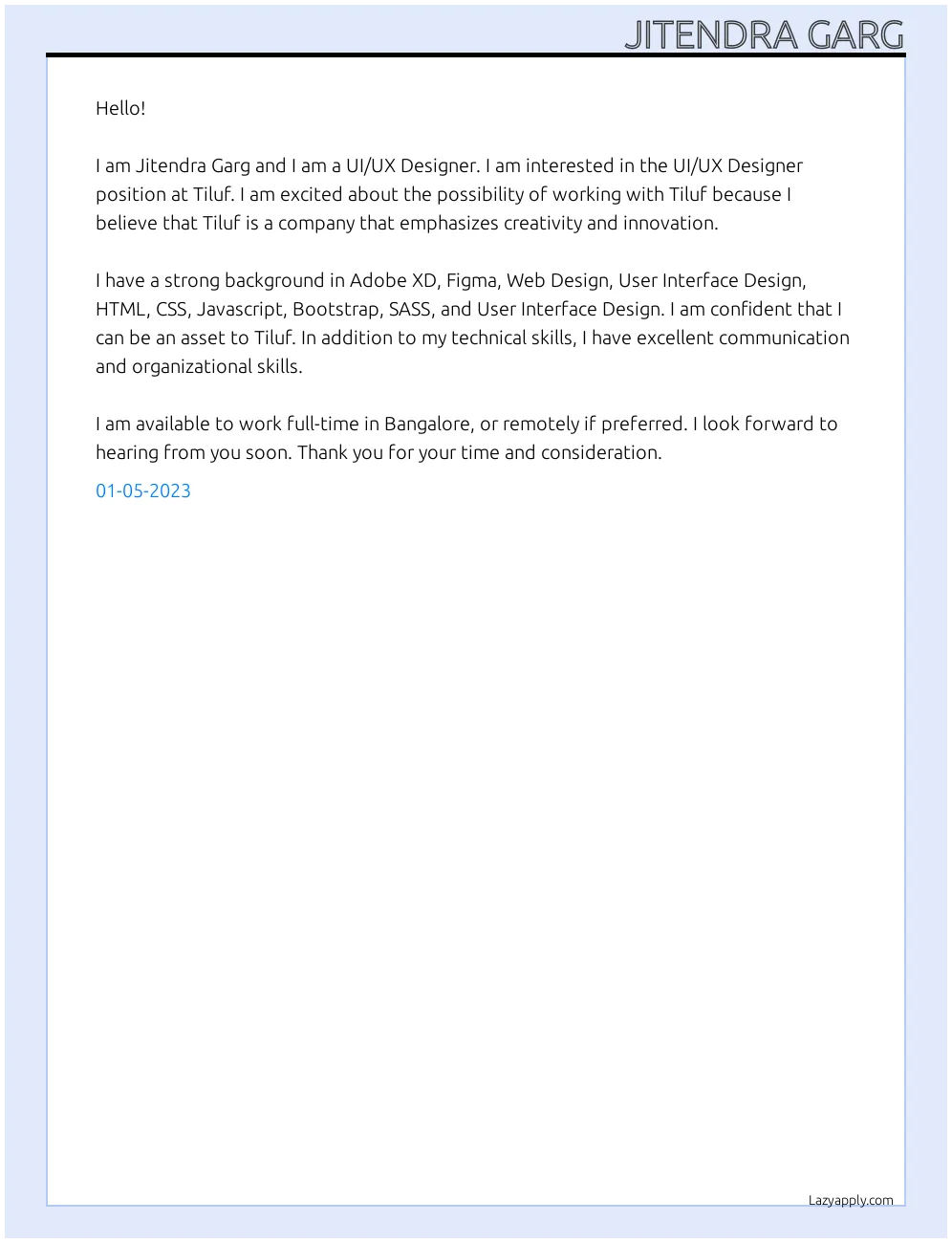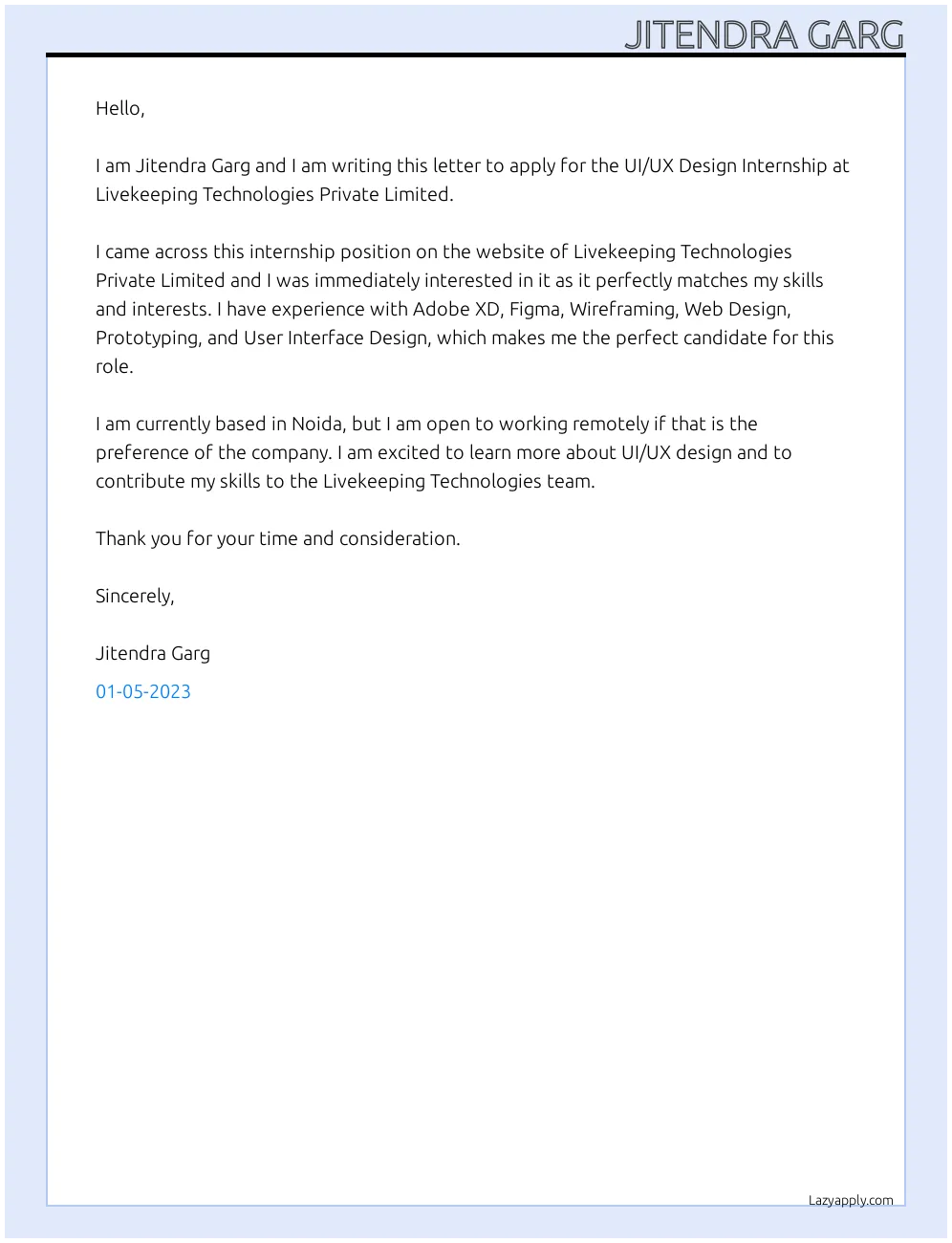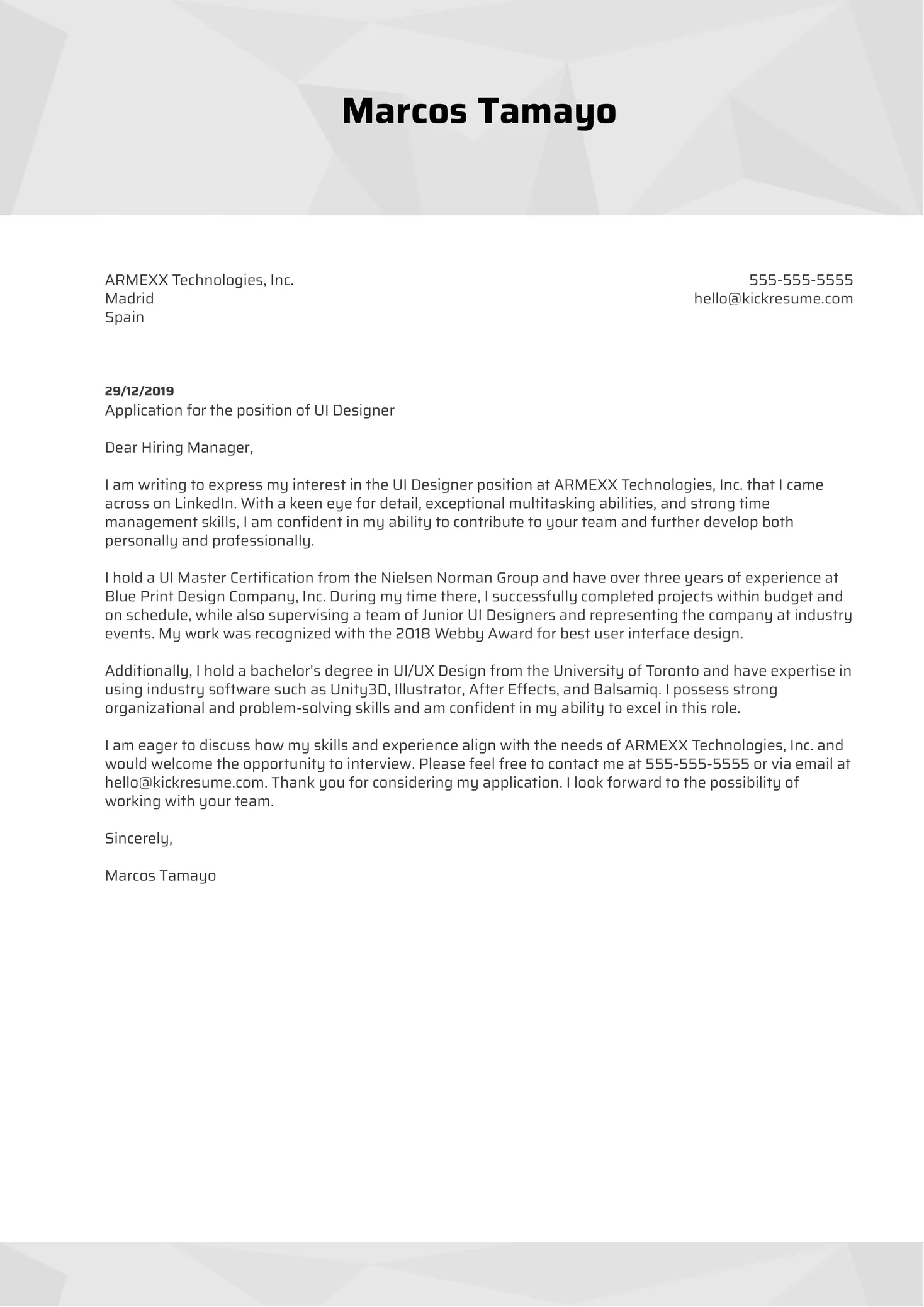What is a UX Cover Letter
A UX cover letter is a crucial document accompanying your UX resume when applying for jobs. It’s your opportunity to go beyond the bullet points and provide context, personality, and a compelling narrative about why you’re the perfect fit for the role and the company. It’s a chance to showcase your communication skills, your passion for user experience, and your understanding of the specific job requirements. The cover letter should highlight your relevant skills, projects, and experiences in a way that resonates with the hiring manager and demonstrates your value. Unlike your resume, a cover letter lets you explain your thought process, design decisions, and the impact of your work, offering a deeper insight into your capabilities.
Why You Need a UX Cover Letter
In the competitive world of UX design, a cover letter is more than just a formality — it’s a strategic tool to set you apart. It allows you to personalize your application, demonstrating that you’ve taken the time to understand the company and the specific role. A well-crafted cover letter enables you to elaborate on your skills and experiences, connecting them directly to the job description’s requirements. It’s also an excellent opportunity to showcase your communication skills, which are vital in UX design, where you’ll be explaining complex concepts and design decisions to diverse audiences. A compelling cover letter can significantly increase your chances of getting an interview, as it provides a complete picture of your qualifications and enthusiasm.
Key Components of a Winning UX Cover Letter

A successful UX cover letter includes several key components that work together to create a strong first impression. Begin with a compelling introduction that grabs the reader’s attention and clearly states the position you’re applying for. Briefly highlight your key skills and why you’re interested in the company. In the body of your letter, elaborate on your relevant experiences, using the STAR method (Situation, Task, Action, Result) to provide concrete examples of your accomplishments. Quantify your achievements whenever possible, using data and metrics to demonstrate the impact of your work. Show your understanding of the company’s mission, values, and the specific requirements of the role. End with a call to action, expressing your enthusiasm for the opportunity and your availability for an interview.
Highlighting Your UX Skills
Your UX cover letter should highlight your key skills, aligning them with the job description’s requirements. Instead of simply listing your skills, provide context by explaining how you’ve used them in past projects. Mention your proficiency in UX research methods like user interviews, usability testing, and A/B testing. Showcase your design skills, including user flows, wireframing, prototyping, and UI design, using specific examples. If you’re familiar with design tools like Figma, Sketch, or Adobe XD, mention these along with your level of expertise. Emphasize your soft skills, such as communication, collaboration, and problem-solving, illustrating them with anecdotes from your work experience. Always demonstrate how your skills have contributed to successful outcomes, like improved user satisfaction or increased conversion rates.
Showcasing Your UX Projects
Your cover letter is the perfect place to showcase your UX projects, providing more detail than your resume allows. Choose the most relevant projects that align with the job you’re applying for. Briefly describe the project’s goals, your role, and the methodologies you employed. Focus on the challenges you faced, the solutions you implemented, and the positive outcomes you achieved. Quantify your results with specific data, such as increased user engagement, improved task completion rates, or reduced bounce rates. If possible, mention the tools and technologies you used. Include a link to your online portfolio or a case study, inviting the reader to delve deeper into your work. Frame your projects as stories, highlighting your problem-solving abilities and your passion for creating user-centered designs.
Tailoring Your Cover Letter

Generic cover letters are easily identified and often overlooked. Tailoring your cover letter to each job application is crucial for making a strong impression. Start by carefully reading the job description and identifying the key requirements and keywords. Research the company, understanding their mission, values, and the products or services they offer. Address the hiring manager by name if possible, showing that you’ve taken the time to do your homework. Customize your cover letter to highlight your relevant skills and experiences, demonstrating how they align with the job’s requirements. Show your understanding of the company’s needs and explain why you’re excited about the opportunity. Demonstrate your genuine interest in the role and the company by making specific references to their work or culture.
Tips for Formatting Your UX Cover Letter
A well-formatted cover letter is easy to read and professional-looking, making a positive impression. Use a clear and readable font, such as Arial, Calibri, or Helvetica, with a font size between 10 and 12 points. Keep your cover letter concise, aiming for one page, or a page and a half at most. Use clear headings, bullet points, and short paragraphs to break up the text and improve readability. Maintain consistent formatting throughout the document, including margins, spacing, and alignment. Proofread carefully for any typos or grammatical errors. Save your cover letter as a PDF file to preserve the formatting and ensure it can be viewed correctly on any device. Your format should be easy to read.
Common UX Cover Letter Mistakes to Avoid
Avoid these common mistakes to ensure your UX cover letter stands out for the right reasons. Don’t use a generic template that doesn’t address the specific job or company. Avoid typos, grammatical errors, and formatting inconsistencies, as these can undermine your credibility. Don’t simply rehash your resume; instead, provide additional context and insights. Don’t be overly formal or use jargon that the hiring manager might not understand. Avoid focusing solely on what you want; instead, emphasize how you can benefit the company. Don’t make claims you can’t back up with evidence or examples. Avoid negative language or complaining about previous employers. Always proofread your cover letter before submitting it.
Proofreading and Editing Your Cover Letter

Proofreading and editing your UX cover letter are essential steps to ensure it’s polished and professional. Read through your cover letter multiple times, checking for any typos, grammatical errors, or formatting inconsistencies. Use a grammar checker, but don’t rely on it entirely; manually review the document. Ask a friend, colleague, or career counselor to review your cover letter for clarity, conciseness, and overall effectiveness. Ensure your tone is professional and enthusiastic, and your language is clear and easy to understand. Check that your cover letter is tailored to the specific job and company, highlighting the most relevant skills and experiences. Ensure your contact information is correct and up-to-date. A well-proofread cover letter demonstrates attention to detail and a commitment to quality.
Example UX Cover Letter
Here is a general example of a UX Cover Letter:
[Your Name] [Your Address] [Your Phone Number] [Your Email]
[Date]
[Hiring Manager Name (if known), or Hiring Team] [Company Name] [Company Address]
Dear [Mr./Ms./Mx. Last Name or Hiring Team],
I am writing to express my enthusiastic interest in the UX Designer position at [Company Name], as advertised on [Platform]. With my [Number] years of experience in user-centered design and my passion for creating intuitive and engaging digital experiences, I am confident I possess the skills and dedication to excel in this role and contribute significantly to your team.
In my previous role at [Previous Company], I was responsible for [briefly describe key responsibilities and accomplishments, e.g., conducting user research, creating wireframes, and prototyping solutions]. I successfully [quantifiable result, e.g., increased user engagement by 20%]. I am proficient in design tools such as Figma and Adobe XD, and I am well-versed in user testing methodologies.
I am particularly drawn to [Company Name] because of [mention something specific about the company that excites you, e.g., their commitment to innovation, their focus on user needs]. I am eager to leverage my skills to contribute to [Company’s goals or projects].
Thank you for your time and consideration. I have attached my resume for your review and welcome the opportunity to discuss my qualifications further in an interview.
Sincerely, [Your Name]
